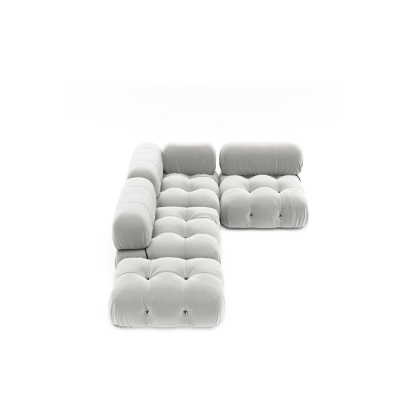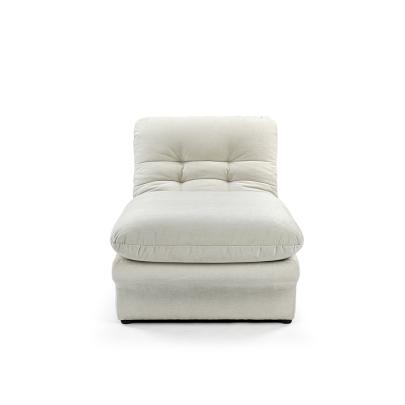
Top Interior Designer's expert opinion on the use of plants in modern interior design in 2021
We've humbly requested the Top Interior Designers in the country for their thoughts about adding plants in modern interior design and here are some expert opinions that we believe will help us all.

Elsa Soyars, Principal Designer, Elsa Soyars Interiors, one of New York's Top Interior Designers.
I love to incorporate plants in my designs. Either accents on surfaces or corners of rooms for height , color and texture. They just bring life into spaces. Either succulents in glass containers, interesting cactus or fig trees. Beautiful orchids are instant elegance. Dried color roses in great boxes have become hugely popular. Poinsettias white or red for the holidays! There is so many simple choices that we can add to achieve a finish look in spaces.

K-Ann, the owner of K-Ann Kreations & Design, one of New York's Top Interior Designers.
One design trend that I see becoming a huge staple these days are Crystal Gardens! After a year of so much negativity and uncertainty people are really looking for peace within creative hopeful ways into their space and I have noticed as well as taken interest in these beautiful crystal gardens in place of a majority of plants! They are maintenance free and offer a calming to the space as well as look so pretty and unique! I'm finding people are making their own by researching how earth's crystals affect energy and incorporating sweet small succulents in a beautiful glass terrarium really adds a splash of zen! I have included an image of one a friend of mine and a client has recently developed a small business in creating herself below called ‘Crystalized. Gardens and I absolutely love this idea! As a designer I am constantly learning and incorporating new things especially being a huge proponent for positive energy and bringing that into newly designed spaces!
Todd Davis, co-founder of Brown Davis Interiors, one of the Inspiring Miami Interior Designers.
We are currently working on a South of 5th full floor ocean front penthouse with a full roof top garden and pool. It is interesting you should ask about incorporating plants since this has been a topic we have been discussing with the clients.
In the very large Master Bathroom we are incorporating plants along a wall of floor to ceiling windows to create the sense of privacy while creating a lush tropical environment. The plants are decorative and help fill the very large space. We are also incorporating tropical plants in the very large enclosed shower to decorate the space without making it look decorated. These plans help soften the very modern architecture

Mara Rodriguez-Walters, owner and designer of MARA.HU DESIGN, one of the Inspiring Miami Interior Designers.
There is nothing like bringing a little bit of nature to interior design. Incorporating plants in your design helps make the space look and feel fresh and energized. Sometimes utilizing plants can be a challenge, mostly if you're trying to keep a clean and simplistic look to today's popular contemporary modern design. I find utilizing either succulents or perhaps a Fiddle Leaf palm allows me to marry the two without jeopardizing my design goals. Plants can also inject a pop of color when utilizing white and natural color palettes. I find myself working often with plants now that my clients are gravitating more to the indoor/outdoor design concept.

Tiffany Piotrowski, Principal Designer, Tiffany Leigh Design Inc. one of the Top Home Decorators.
We believe that every room needs a little bit of greenery! Not only do they help purify the air, but adding plants to your decor is a great way to infuse some life into the design of your space.
We love taller plants like trees (particularly loving Olive trees and Audrey Ficus trees at the moment) to add height to a space and draw the eye up. They can help fill a corner that's looking a little empty and look purposeful and planned.
We like to style trees in woven baskets for a more relaxed, casual look.
Smaller plants make great coffee table and shelf styling additions!
15 Plants Guaranteed to Spice Up Your Interior Design Concept in 2021
Plants are one of the best features that you can introduce in an interior design. In fact, using plants as interior decor is one of the major rising trends of 2021, and if you're looking for the best ones, you're at the right place.
We've compiled a list of 15 plants that are guaranteed to spice up your rooms this season. They're simply wonderful, easy to care for, and will make your space feel absolutely refreshing. Add them next to your Flag Halyard Chair for an organic feel, on your kitchen countertop with your Bertoia Counter Stool for contrasting elements, or by your Mario Bellini Camaleonda Sofa for a pop of colour.
From sprawling creepers to low-maintenance succulents, you can find all types on this list. So without further ado, let's take a look at how you can place them and everything you need to know about growing/caring for them:
Creeping Phlox by a sunny, well-lit window

This plant is a great way to bring a pop of bright color to your interior designs. It's a perennial and blooms with beautiful star-shaped purple flowers. They can either be potted or planted in outdoor flower-beds. They're native to North America and can be found anywhere. The Phlox plant can either be found in low-height or medium-height varieties. You can feature it in a bright, sunny window in your home interiors and pair it with your other favorite greenies.
How to grow creeping phlox in containers or pots
Creeping phlox needs room to grow and sprawl, so it's best that you find some large pots and containers to grow them indoors. Here's a handy guide and some tips on how to grow this plant indoors:
Steps for growing Phlox
- First of all, you need to plant the phlox seeds into small pots around six weeks before the last frost in your area.
- Once the frost has passed and spring has come in earnest, you can transplant these seedlings into the container (which should have at least 1 drainage hole).
- While transferring into the container, mix the soil with a good potting mix and make sure that you leave at least six inches between each plant.
- Water it well after planting and do remember to mix in some all-purpose fertilizer if your potting mix doesn't have any.
- Keep it by a sunny window and make sure that the soil dries a bit after each watering, as the phlox can rot in moist soil.
Monstera Adansonii on a Macrame Hanger by the window sill

Also known as the five hole plant, the Monstera Adansonii is absolutely exotic, beautiful, and perfect for adding that lush vibe to your interior concepts. It's an incredibly unique houseplant that has glossy green leaves that will remind you of the tropical forests of South America of which this plant is a native of. Since this plant thrives in bright, indirect diffused light, you can place it on an end table, in the center of your Platner Coffee Table, or even hang it on an intricate Macrame wall hanging on a statement wall.
How to grow Monstera Adansonii in a pot
This is a creeping plant with aerial roots and can reach up to 6 feet in height in as many months. It's pretty easy to grow and take care of. Here's a handy guide on how you can plant your own:
Steps for growing Monstera Adansonii
- You can plant your Monstera Adansonii in a pot with lots of drainage holes.
- Make sure that the potting soil has peat, as it helps trap the moisture.
- Plant the seeds and watch how it creeps up.
- This breed of Monstera requires regular pruning and trimming to avoid looking scraggly.
- You need to water it consistently. Keep the soil moist, but don't let it become soggy.
- A good tip for growing the adansonii plant: make sure that the top inch of the soil is dry before you water it.
Majesty Palm near a sunny window

This gorgeously regal plant is an excellent way to add a touch of green to your interior design concept in 2021. The lush fronds, tall stature, and easy maintenance make it one of the best choices for indoor house plants that you'll ever come across. It's an elegant plant that loves the sun, so it's best that you put it beside a sunny window! You can use it as a statement piece or put it in an empty corner of your living room along with your EM Sky Sofa for a beautiful look.
How to grow Majesty Palm
The Majesty Palm is a slow-growing plant and takes its time to grow tall. It requires the perfect blend of light, humidity, and fertilizer in order to look its best. Let's take a look at how you can grow it:
Steps for growing and caring for the Majesty Palm
- This plant requires a large pot to accommodate its slow growing, but large girth. Make sure that it has good drainage and is a few inches bigger than the root ball.
- It should be planted in a fast-draining soil like a cactus mix. All the better if it has a bit of peat in it as well.
- It needs repotting every other year when the roots outgrow the planter.
- The Majesty Palm does not like to be completely dried out between watering, so you should always keep it moist. This is because this particular specie is found near marshes and river banks.
- This plant also enjoys humidity so keep it in high temperatures and sunny windows. You might want to supplement it with a humidifier as well!
Maidenhair Fern as an end table centerpiece

Comprising of around 200 species of ferns, this planter is perfect for brightening up your interior designs with a dash of green. It's a popular houseplant that's as resilient as it's easy on the eyes. It's also slow growing and might even take years to reach its full potential growth! With its pretty lace-like leaves and delicate appearance, this plant will make an excellent centerpiece on your end table or coffee table. You can even hang it on your window sill in beautiful plant hangers!
How to grow Maidenhair Fern
Since the natural habitat of a Maidenhair Fern is in the partial shade of tall forest tree canopies, that's the kind of setting it thrives in indoors as well. Here's a thorough look at how you can grow it indoors:
Steps for growing and caring for a Maidenhair Fern
- This plant should be potted in well-draining, moist soil that is interspersed with organic matter.
- It prefers a soil with an alkaline pH, so adding some ground limestone to the soil can help with this.
- It thrives in small containers and doesn't require repotting.
- As for watering, just make sure that the soil is always moist, but never over water it.
- It's best to mist it daily and keep away from HVAC vents, as it is intolerant of humidity.
Red Twig Dogwood in a pot by a sunny window

This indoor bush with its red colored twigs will brighten up your interior designs with its bright, dashing personality. It's a stunning plant that grows variegated leaves (meaning multicolored green leaves) and berries during the summer. But its red twigs are what always takes center stage, and definitely what makes it a highly coveted indoor plant for most people. This plant enjoys the full sun, but also longs for partial shade sometimes. Therefore, it's best that you place it by a window that lets in lots of sunlight during the day!
How to grow the Red Twig Dogwood
Indoor Red Twig Dogwoods can grow pretty tall, so they make amazing statement pieces. When put beside a window, their lean bodies will provide some great silhouettes against the view outside. They can grow up to 8 feet tall when not pruned or trimmed regularly. Here's how you can grow them:
Steps for growing and caring for the Red Twig Dogwood
- This plant thrives in boggy conditions and requires consistently soggy or moist soil.
- You should add in a bit of hummus into the soil to nourish it with nutrients.
- Although able to adhere to partial shade, the red of the twigs will come out the best when this plant is put in the sun.
- When newly planted, the Red Twig Dogwood should be watered weekly. When matured, it should be watered only during its dry spells.
Swiss Cheese Plant by a well-lit nook with indirect light

Formally known as Monstera deliciosa, the Swiss Cheese Plant is a lush, absolutely gorgeous fern-like plant that would make an excellent addition to any interior design. It has a certain tropical beauty and is quite unfussy. Its long-lobed leaves are absolutely striking and their heart-shaped aesthetic never fails to seem absolutely attractive. It's a plant that grows best in indirect light, so place it near a window where it can get some filtered light. Alternately, if you have any portal with glass blocks, then you can place this plant directly next to it.
How to grow the Swiss Cheese Plant
- The tricky part about growing Monstera deliciosa is finding the perfect lighting conditions for it. Otherwise, it's pretty easy to maintain and grow. Here are some major aspects to know if you're thinking about growing it:
Steps for growing and caring for the Swiss Cheese Plant
- Put it in a pot with lots of drainage holes.
- The preferred soil mix for this Monstera plant is a bit on the dry side.
- You should use liquid fertilizer for it during summer, and leave it be during the winters.
- This plant prefers high humidity so it's best if you get a humidifier for it especially if you live in areas with low temperatures. If not, then just occasionally mist it.
- If you really want to be stylistic with it, you can outfit your Swiss Cheese Plant with a pole so it can creep upward easily.
Mexican Petunia in a container by a mildly sunny window

Lovingly known as Purple Showers this plant is perfect for imbuing a dash of violet in your interior designs. It's a shady perennial that thrives in warm, dry climates and would look absolutely enchanting in any interior design that requires an eclectic edge. Aside from being inexpensive, Mexican Petunias are also drought-resistant. This plant can cope with heat and will look perfect by a sunny window sill or on a ladder placed directly by the window.
How to grow the Mexican Petunia
This is basically a shade plant that does well in wet conditions, but thrives in the sun. As long as you place your pot by a sunny window, you'll love how it turns out! Here's an extensive caring and growing guide to help you further:
Steps for growing the Mexican Petunia
- This is a fast-growing plant that can grow in a variety of soil types. It should be well-drained and fertile.
- The Mexican Petunia blooms the most flowers when it is exposed in the sun. Ideally, they should be planted in an area where they can drink up a lot of sunshine. But if the sun in your area is harsh, then they can also do well in shady areas.
- One of the best qualities of this plant is that it's drought resistant. Therefore, it doesn't require as much watering.
- It's a fast-growing shrub that requires frequent repotting.
- The aesthetic quality of Mexican Petunias can be enhanced by planting them in vintage containers, small bathtubs, and ladder planters!
Nerve Plant on top of the coffee table in filtered sunlight

Lovingly dubbed as the mosaic plant thanks to the gorgeous veining on its leaves, this plant is a great way to add a dash of bold, green lushness to your interior designs. It's a low-growing perennial with silvery-white veins, so planting it in a white colored pot will make it look extra striking. Sometimes, the veins can even catch a pinkish tint. This plant should be placed in indirect light, so an end table or coffee table near a large sunny window with sheer drapes is a good choice:
How to grow the Nerve Plant
Highly sensitive to the sun, this plant can grow up to a height of three to six inches. It should be kept away from direct sunlight, and needs quite a bit of care to thrive. Here's everything that you need to know about growing and caring for it:
Steps for growing and caring for the Nerve Plant
- You can easily grow the Nerve Plant in a well-draining commercial potting mix that is peaty in nature.
- This plant is pretty tricky to maintain and requires constant levels of ambient humidity in order to thrive. It is at its most content in moist conditions, so it's important to mix it regularly.
- As far as watering is concerned, the plant can wilt and die if it's totally dried out, so never let that happen!
- You should also feed this plant a weekly dose of liquid fertilizer during growing season and repot it annually in the spring.
Baby Tears Plant in hanging baskets by a sheer curtained window

This is a terrarium planter that features tiny leaves thus signified by the name baby tears. It's a creeping, sprawling plant that can spill over its pot in vine-like formations. It's best planted in small to medium-sized pots especially in a glassy white finish that can make the lush green of the leaves look absolutely striking! This plant blooms its best in short bursts of intense sunlight, but can't handle it too much. Therefore, it'd be best if you hang the pots in simple Macrame or metal hangers by a window with sheer curtains!
How to grow Baby Tears Plant
This plant is best grown in containers so that it can sprawl as extensively as it can in an indoor setting. However, if you don't think you can handle it, then small pots are a good option as well. Here's a guide on how you can care for it while growing:
Steps for growing and caring for the Baby Tears Plant
- This house plant grows well in most commercial potting mixes, but make sure that they're lightened with peat for the best results.
- The main thing to know about the Baby Tears Plant is that it does not like to be dried out. If it happens, it will immediately start to wilt. In that case, immediately water it and it will get back to normal in a day.
- Take note that the soil around the roots should always be moist, but the first few inches can be dry.
- This plant thrives in high humidity, so mist it regularly and keep a humidifier handy if you can.
Horsetail Plant

This perennial plant is a great way to make your interior decor as attractive and lush as possible. It has tall stems and looks incredibly attractive as a house plant. It's a moisture-loving species that has tiny plants attached to its stems. It enjoys mild sunshine but is also partial to shade, so you can put it on a cluster of nesting tables by a shady window!
How to grow the Horsetail Plant
With an ability to grow between 2 to 6 feet, this plant requires mild sun exposure. It's pretty easy to care for, but curbing their sprawl can definitely be a challenging task. Here's how you can grow and care for it:
Steps to grow and care for the Horsetail Plant
- The thing about the Horsetail plant is that it requires poor, gravely soil to thrive. The richer the potting mix, the slower it will grow.
- Since this plant is a spreader, you can place plastic barriers in the soil to contain it.
- It's pretty adaptable to all types of lighting conditions. It enjoys the sun, but grows just as well in the shade.
- This plant is partial to high humidity and only requires the occasional fertilizing.
Asparagus Fern in dappled sunshine by a shady window

This is an uncommon houseplant, but its uniqueness makes it one of the best choices to introduce wispy greenery in your interior designs. It's pretty bushy and has lace-like foliage that creeps out of the pots in a very attractive manner. Its light green hue is not only beautiful but can also make an attractive focal point in an interior. It's an invasive species and can be toxic to pets. It's basically a spiller that would look amazing in a bold white container or pot. It grows best in partial sunlight, so putting it on a console by a large window with sheer curtains is a great idea.
How to grow the Asparagus Plant
This house plant can grow up to two feet and can sprawl along 6 feet in its growing stage. It needs regular pruning and thrives in indirect light. Here's everything that you need to know about growing and caring for it:
Steps for growing and caring for the Asparagus Plant
- The Asparagus Plant grows nicely in well-drained potting mix.
- It needs to be kept out of direct sunlight. It grows the best in filtered light with the occasional glimpses of the sun.
- This plant needs to be kept hydrated and loves humidity. So water it regularly, especially if the leaves are turning droopy.
- Another thing about the Asparagus plant is that it loves the humidity, so mist it regularly and keep a humidifier handy if you must.
- This plant requires weekly feeding of fertilizer in the summer, which is reduced to monthly feedings during the winters.
Crassula tucked in a hanging on a feature wall

If you're searching for a good succulent, then this is the one that you should be looking at. Also known as the jade plant this one can make your interiors feel super attractive with its lush green presence. It's small, fascinating, and easily available. It's a great way to practice your green thumb especially if you're a beginner who hasn't had any experience ever growing a plant. This plant has dark, glossy leaves that look very tropical and unique. Just plant yours in a nice pot, put it in a wall hanging and create a green feature wall in your interior designs.
How to grow the Crassula Plant
This plant loves medium temperatures and doesn't do well in extremes. They're pretty low-maintenance and easy to care for. If you're planning to get one of your own, here are some handy tips and tricks on how to care for them:
How to grow and care for the Crassula plant
- Since the Crassula plant is a succulent, it does pretty well in well-draining, sandy soils. Neutral to acidic soils are good, but anything extreme can kill them off.
- This plant requires a lot of sunlight to thrive and reach its full color potential. However, too much stark sunlight can also scorch its leaves, so beware of that. Placing it in morning sun and afternoon shade is the best way to go.
- The Crassula plant does not need extensive watering. Soak it, drain it, let it dry out, and then water it. The roots can rot in moisture, so avoid extensive watering in the cooler months.
- As far as fertilizing is concerned, you can feed it organic fertilizer mid-spring, but otherwise, it doesn't need any further nurturing.
Purple Fountain Grass in the center of a sun-drenched window

This stylish plant is known for its dramatic countenance and would spruce up your interiors with its graceful aesthetics. It has long burgundy colored leaves and slim, arcing light purple flowers. It's considered a non-invasive grass specie. It has a fall vibe, so if you're creating a baroque style interior concept or using autumnal colors in your spaces, then this is the perfect plant to complement it. Purple Fountain Grass is a summer plant that blooms to the fullest in July, so it would thrive when you put it in the center of a sun-drenched window.
How to grow Purple Fountain Grass
This summer plant loves the heat and would bloom to its fullest during the hottest months. It can reach a mature height of between 3 to 5 feet, so it will also make an excellent statement piece in an interior design. Here's how you can grow and care for it:
Steps for growing and caring for Purple Fountain Grass
- This plant isn't choosy in its soil type as long as it is loamy and well-draining.
- It should be planted in large containers and the soil should be dug deep and wide enough to accommodate its growing roots.
- The Purple Fountain Grass plant thrives in full direct sunlight and does not do well in shady areas, so place it accordingly. If not on a sunny window sill, you can also hang it on a Macrame plant hanger in an area of your interior that receives direct sunlight.
- Since this is a drought-tolerant plant species, it's considered pretty low-maintenance when it comes to watering. Just once or twice a week is good enough.
- This plant can grow in poor soils, but boosting it with fertilizers with definitely show you better results.
Calathea White Fusion by your sheer curtained window

This indoor planter will make your interior concepts feel two times more stylistic, incredible, and unique. With the bold markings on its leaves, an abundance of lushness in its aesthetic, and an ability to be the focal point of any space, this plant is one of the best investments that you'll ever make to improve your home interior. The leaves of this plant feature bold zebra/rattlesnake/peacock inspired patterns and have a striking pink-ish underbelly that runs into the stems as well.
How to grow Calthea White Fusion
The main thing to remember when growing this plant is to keep it away from too much direct sunlight, or the patterns on the leaves might get bleached out. Here's a small guide on how you can grow and care for this plant:
Steps for growing and caring for Calthea White Fusion
- This plant should be potted in a soil that retains moisture really well. You can also make your own potting mix. Just make sure it's peaty and very light.
- The perfect lighting condition for this plant requires a great balance of filtered light. You can place it by a window with sheer curtains. Or you can place it by a window portal affixed with glass blocks.
- Make sure that the pot/container that you place your Calthea in has good drainage. It'll be disastrous if the soil gets water-logged.
- This plant does not appreciate high temperatures, but it does appreciate a good amount of humidity. So either keep a humidifier on hand, or mist the leaves a few times a day.
Alocasia in a partially shady alcove

This indoor plant has a sculptural look thanks to its beautiful leaves. It has around 80 species and is known for its strikingly white veins that beautifully contrast the backdrop of green. This plant thrives in partially shady areas, as its natural habitat is under the canopy of tall forest trees. It grows well in containers and can make an excellent addition to any home interior. Just put in in an alcove that's hit by sunshine in the morning and remains shady during the evening, and see how it thrives.
How to grow Alocasia
This plant has a short growing season, but it can certainly make up its pace and grow pretty rapidly once it starts. It grows dormant during winter and stops growing. Here are some tips on how you can grow and care for it:
Steps for growing and caring for Alocasia
- This plant thrives the best when it is potted in crumbly soil. It should also be well-drained.
- Make sure that the top few inches of the soil are dry before you water it.
- The trickiest part about growing alocasia is finding that perfect balance of light. Too much direct sun can make its leaves burn, while too much shade can make it wilt.
- Note that some varieties of alocasia die during winter and resprout in warmer weather.
- Larger varieties of this plant need heavy fertilizer doses, so it's best if you feed them with liquid fertiliers.
These fifteen plants are some of the most beautiful and stylish ones that you'll ever come across. We've listed down all that you need to know about them, so you'll be easily able to care for them!
























